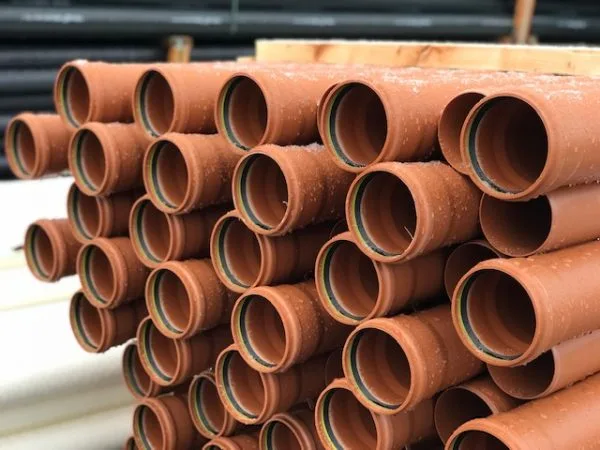Even though the topic of water pipes and waste pipes is standard knowledge among professional plumbers, it can be helpful for property owners to learn more about the differences – especially when hiring professional plumbing services. There are distinct purposes for these pipes, which is why different materials and layouts are used depending on the system structure.
Waste Pipes (Sewer Lines)
When waste is being moved away from your home or office building, then this waste moves through the sewer lines. The goal is to keep the waste out of the building and move it to a location where it can be disposed of or treated as needed.
The waste pipes located within the home or office are known as “building drains.” Any sewer lines located outside the building (in the yard or surrounding areas) are known as “house drains.” The term “waste pipes” or “sewer lines” are general phrases referring to both the pipes inside and outside of the home.
Grey water and solid waste move through these pipes to private sewage treatment systems, such as a septic system. Or they move the waste to a larger public sewage treatment plant that serves the public. Most of the time, waste pipes are manufactured using PVC plastic, steel, cast iron, vitrified clay, ABS plastic, and more.
Water Lines
On the other hand, water pipes are designed to bring clean water into the building. “Potable water lines” mean that the water is clean and drinkable. These are the pipes that push water through your faucets and showers. When water is supplied by the municipality, then some specific treatments and regulations need to be followed to ensure the cleanliness and safety of the water.
It’s important that these water lines are protected to avoid cross-connection with sewer lines. Steps must be followed to protect drinking water sources from contamination so that you can drink and use the water without worrying about getting sick.
Hiring a Plumber to Ensure Safety and Efficiency
Most homeowners don’t have the proper training or experience to handle plumbing repairs and installations without consulting a professional plumbing expert. If you need assistance and want to know the best materials to install in your home, consulting with a professional can be helpful to minimize the risk of common problems.




